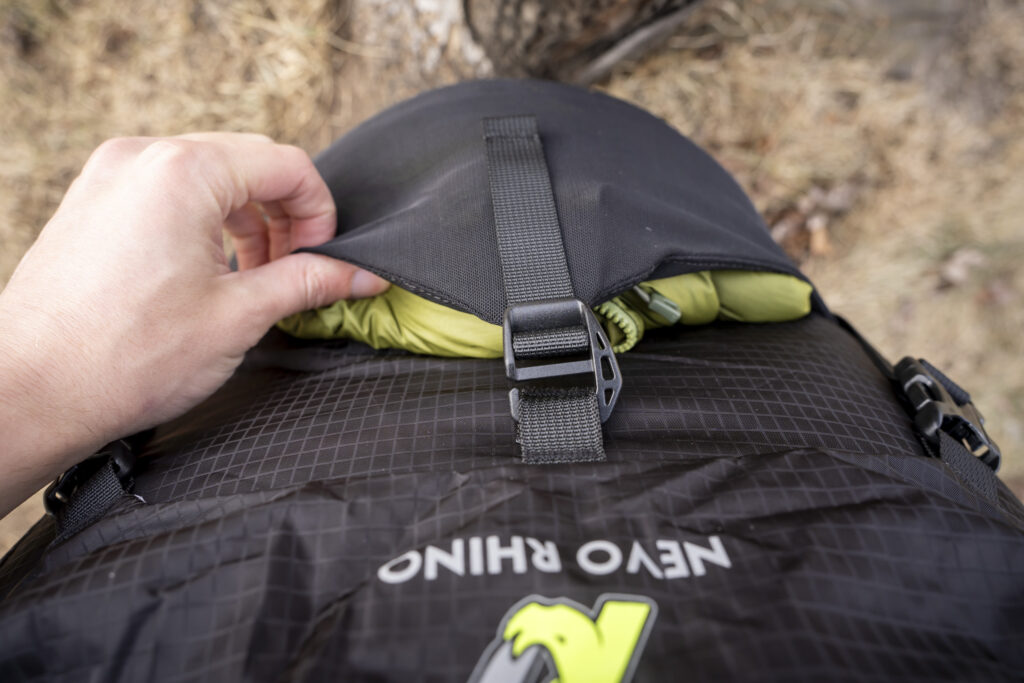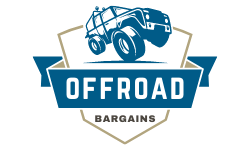
N Nevo Rhino 65+5 Backpack Review
Bottom Line
The N Nevo Rhino has a tempting low price, but it’s not the budget backpacking backpack you hoped it might be.
Outdoors gear can get expensive, so it’s valid to ask, “why would I pay $300 for a backpack when this one on Amazon does the same thing?” Good point. Hunting for a hidden gem, we dug through the pages of listings to find a competitive internally framed backpack, and the Rhino was the closest we found. We hoped it would perform well and potentially offer great value, but it ended up performing about as we’d expect for the price.
The Rhino has many of the same features as more expensive backpacks, but we got the impression during our testing that it was assembled by someone who didn’t understand backpacking that well. For example, we discovered the hip belt pockets were not supported, the back stretch pocket unclipped at a difficult to access location, and the sleeping bag compartment was marketed as a place to store shoes. On top of that, the hip belt and shoulder strap comfort were decent, but the back panel was uncomfortable and not something we’d want to endure for hours on end.
Maybe next time we’ll find a diamond in the rough on Amazon, but this budget pack was a swing and a miss. For the quality you get here, most people would be better off getting a used backpack or saving up for another budget pick in our guide to the best backpacking packs.
How We Tested
We took the Rhino on local trails in Minnesota during the winter while we were overhauling our entire backpack gear guide.
Quick Specs
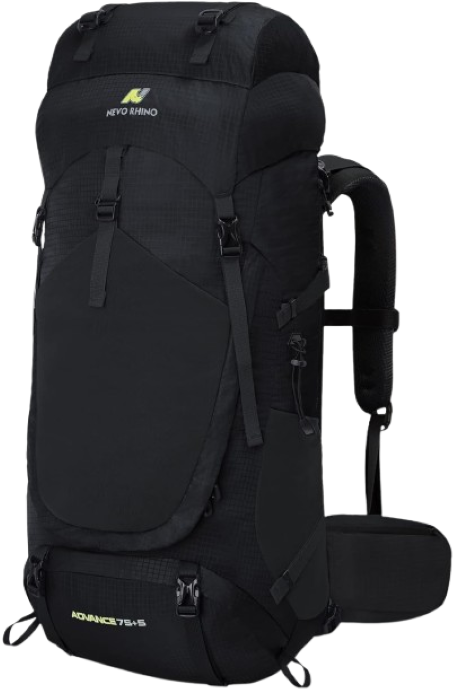
Nevo Rhino 65+5
Acceptable Low Price Backpacking Pack
CleverHiker Rating:
3.6/5.0
Price:
$85
Weight:
5 lb.
Volume:
70 L
Max Weight Rec.:
NA
Pros
- Affordable
- Good feature set
- Has internal frame
- Good hip belt comfort
Cons
- Poor quality construction and stitching
- Uncomfortable back panel
- Heavy
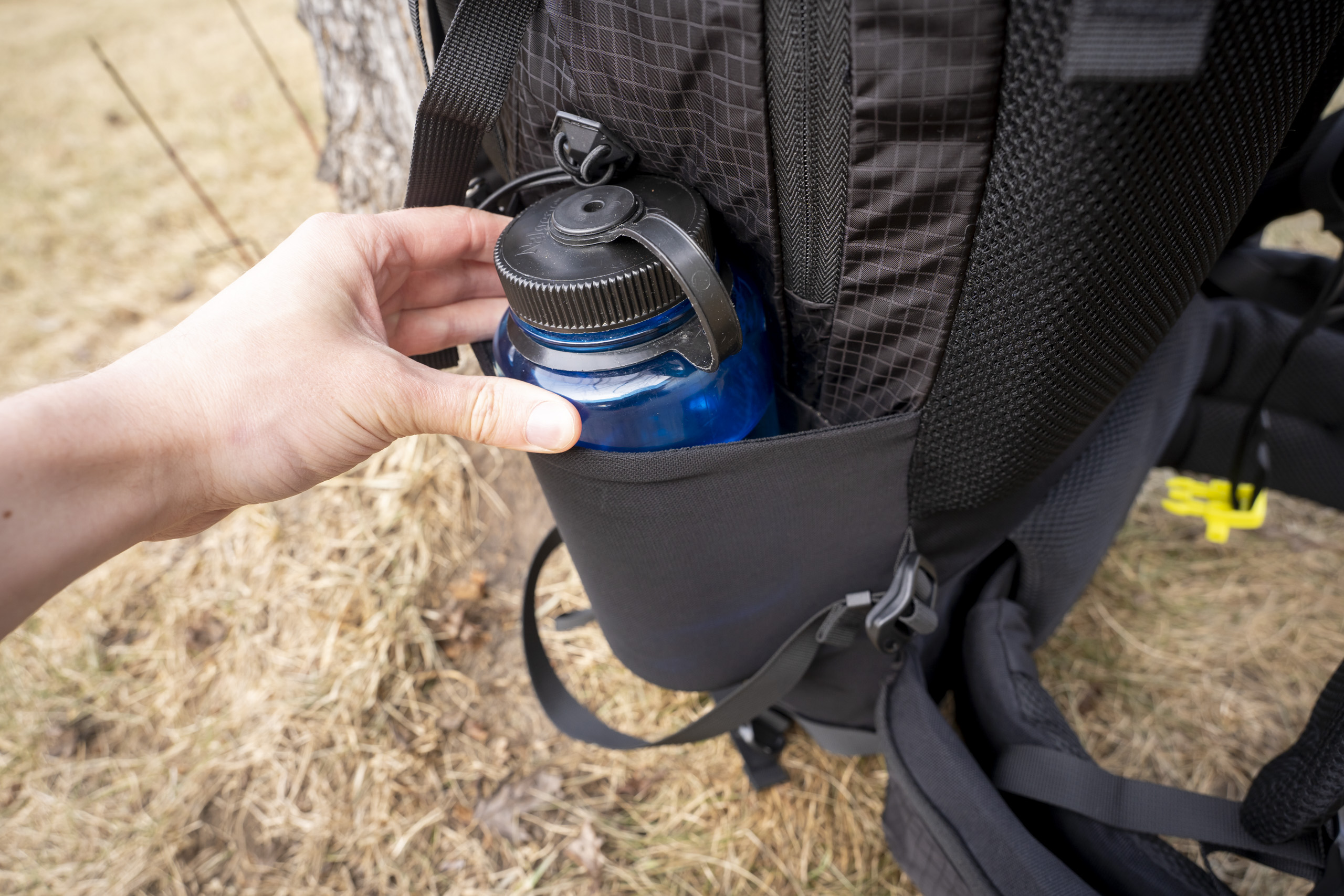
Comfort
The good thing is that the hip belt surprised us. When loading up the pack with 30 pounds, we tightened down the buckles and felt a decent amount of support and comfort. This is in large part thanks to the wide foam belt design that does a good job distributing the load here. Unfortunately, comfort fell apart quickly once we shifted our back around.
This is part of a larger feeling we got with the Rhino we’ll come back to, but it seems like the designers of the pack weren’t backpackers themselves. The back panel is a great example of that. You see, many backpacking packs have a gap between the two pads that rest on the back. This is sometimes done to promote airflow but also to adjust torso length. It seems the designers of this pack wanted to copy that design, but made the gap too wide, resulting in foam pads that actually press into the back with their corners. This results in a very strange feeling of the foam padding creating pressure points – the exact opposite of what you’d want them to do!
If we stood perfectly upright and just let the weight rest on the shoulder straps and hip belt, the comfort was actually decent. But as soon as we moved about, the back panel would remind us this is not a pack designed for long distance comfort.
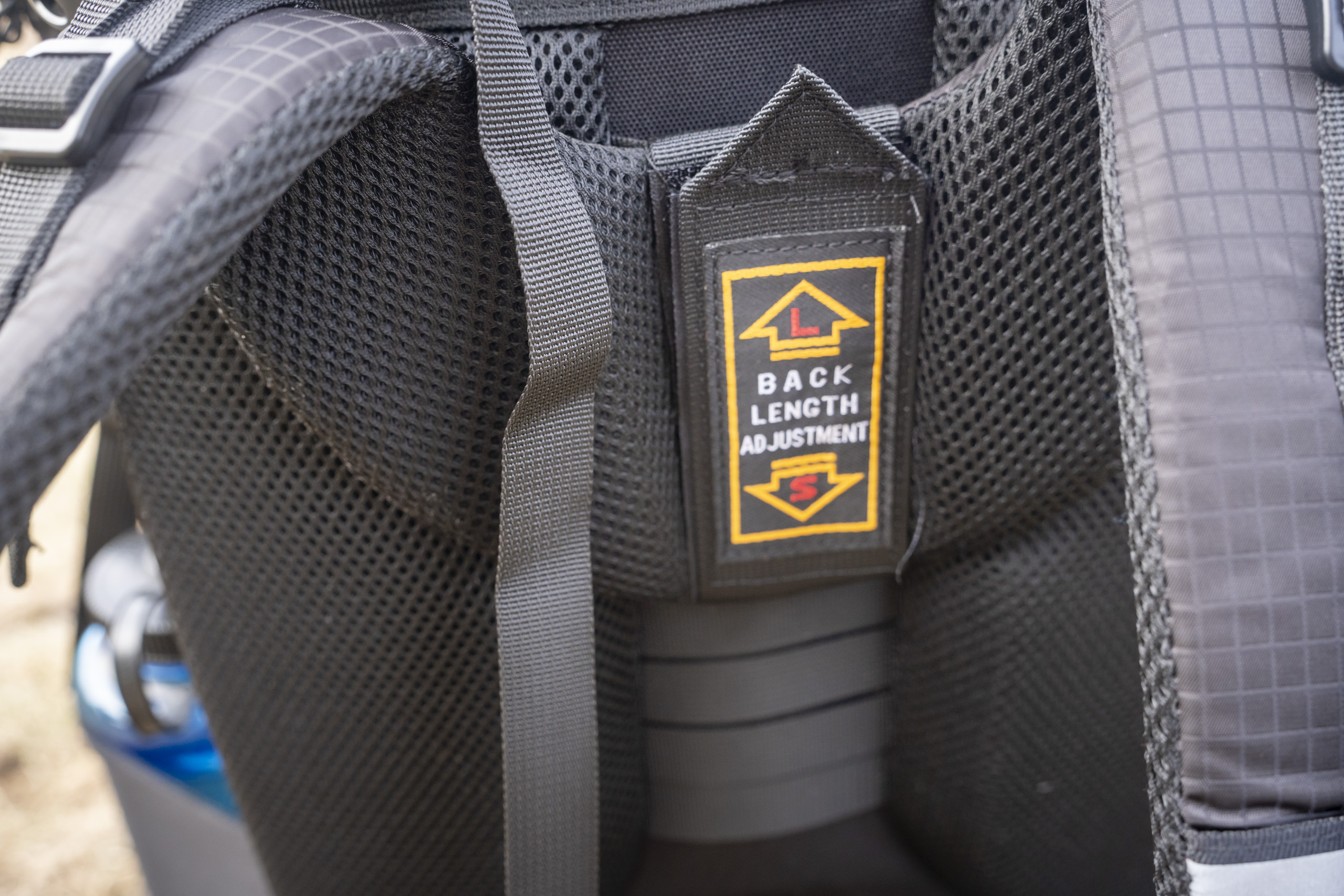
Features
Like a lot of low budget packs, the Rhino attempts to throw everything in to make it appeal to as many people as possible. We get large hip belt pockets, an adjustable torso, rain cover, sleeping bag compartment, side zippers, U shaped zipper, top lid, side straps, and stretchy ice axe attachment cords, along with others.
To various degrees, all these features work well. But there’s an overall feeling like there was no room for refinement on any of these features.
A good example of this is the flap of fabric that covers the large U shaped zipper. It’s supposed to lie flat and provide rain protection. Instead, it sticks straight out, almost perpendicular to the pack body. This feels like the design accommodated for a piece of fabric in this location, but didn’t test how the fabric would fit or how the tension of the fabric would cause it to behave.
There are numerous other examples of this around the pack. For instance, the hip belt pockets float around in a loose way, the top lid is oddly tall, and the back stretch pocket connects to a point on the pack that is usually covered by the top lid, which makes accessing it difficult unless the lid is unclipped.
As we mentioned in the comfort section, it seems the designers of the pack were simply aiming to copy existing packs without much thought for how the pieces all fit together. Nowhere was this more apparent than in the marketing for the bottom sleeping bag compartment. This is a common feature in many traditional packs, but on the marketing page for the Rhino, this compartment is marketed as a “Separate Shoe Compartment.” If you’ve never been backpacking before, a separate pocket like this may seem similar to gym bags that feature a shoe pocket. But it seems like this pack was put together with all the parts of a backpacking pack but with none of the intention.
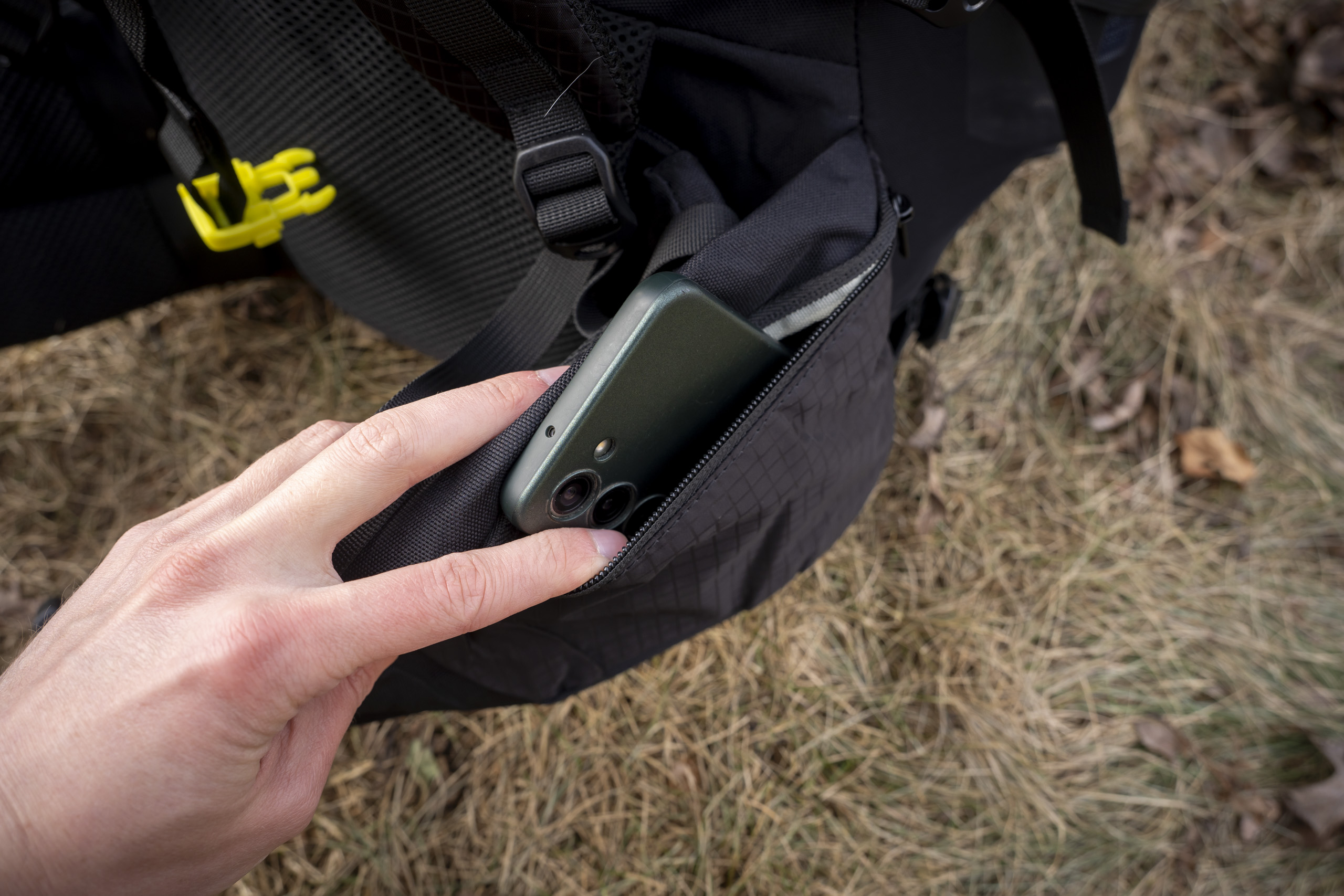
Durability
As a budget backpack, we expect to see a lower level of durability. Unfortunately, the Rhino doesn’t provide much confidence here.
Most of the fabric feels decently thick, but there’s no way of knowing what quality of fabric N Nevo used. When we loaded up the pack with 30 pounds, we instantly started seeing seams flexing and showing threads, which isn’t a good sign for long term durability. These seams will only flex more and more as the pack is used, eventually failing.
We do have to admit – the overall quality is slightly higher than we were expecting, given the price. But this pack appears to lag behind other backpacking in potential durability. The addition of mesh on the water bottle pockets and back stretch pocket also makes us feel those would be the first to fail. This isn’t a pack we’d want to take on a thru hike for fear of it failing on us midway through.
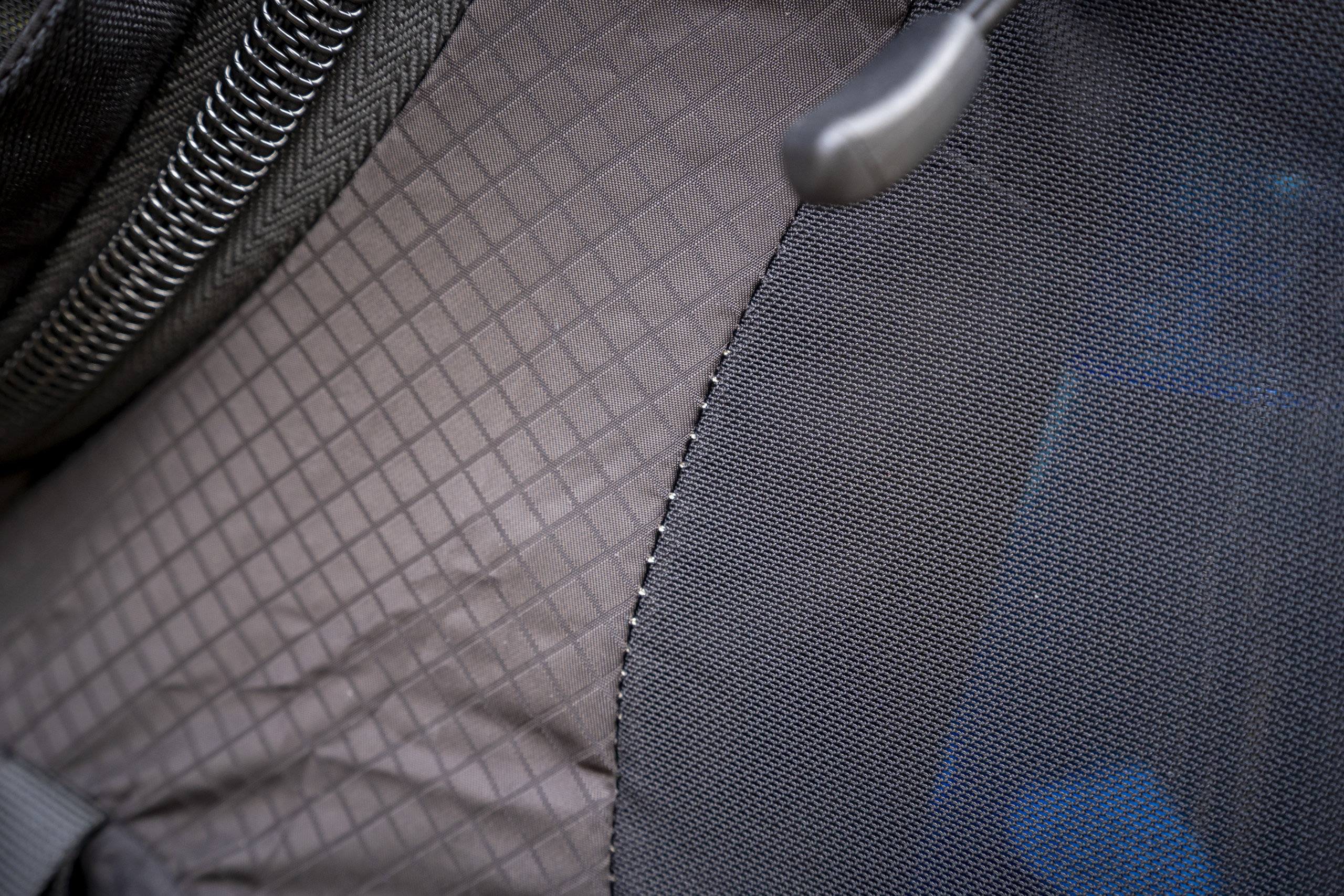
Ease of Use
With so many features, the Rhino ends up being a bit of a complicated beast at times, but it surprised us by being manageable.
There are a few notable negatives. The water bottle pockets are too high to be usable while wearing the pack. Plus, the back stretch pocket clips to a point that is covered by the top lid if you cinch it down, and the hip belt pockets are a bit far back and unsupported.
The good news is those hipbelt pockets are some of the few that we tested that can be opened and closed one handed. The pockets are also decently large. Even so, they weren’t our favorites because they flopped around a bit. Fortunately, the bottom zipper, U shaped zippers, and top lid each operated easily.
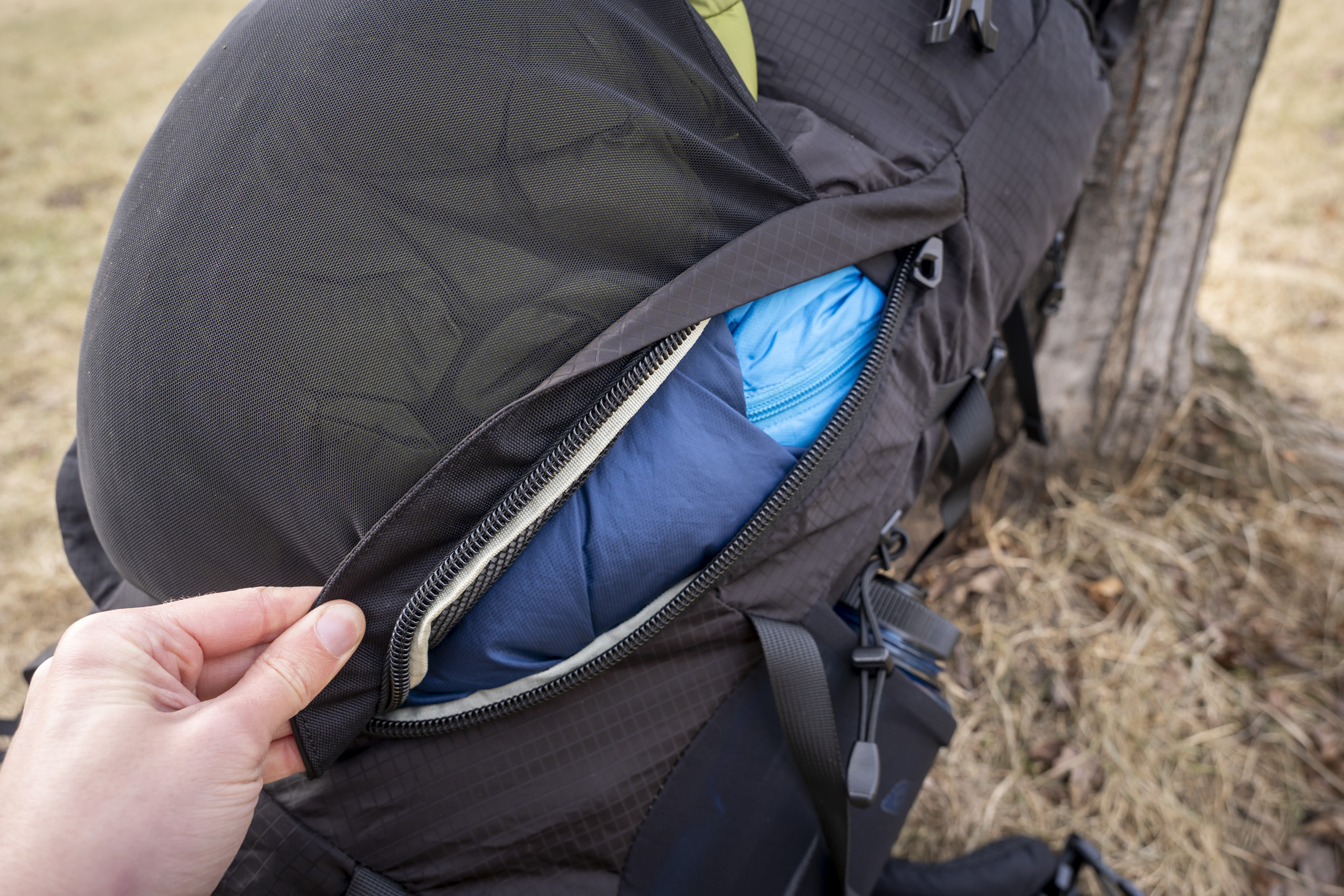
Should You Buy the N Nevo Rhino 65+5 Backpack?
In general, no. If you’re someone who needs a backpack – any backpack – for one or two trips, this will be fine. It won’t be the best, you’ll be fighting it sometimes and won’t leave the best impression, but you’ll be fine. However, we don’t think it offers a great long term value. Even worse, we fear that a pack like this would provide a poor experience for beginner backpackers – to the point they might sour on backpacking entirely. Instead, consider a good, used backpack. Good quality packs will last years of use, and the used market is typically full of packs that still have a ton of life left in them. For a similar price, these used packs offer a much better investment and will last longer.
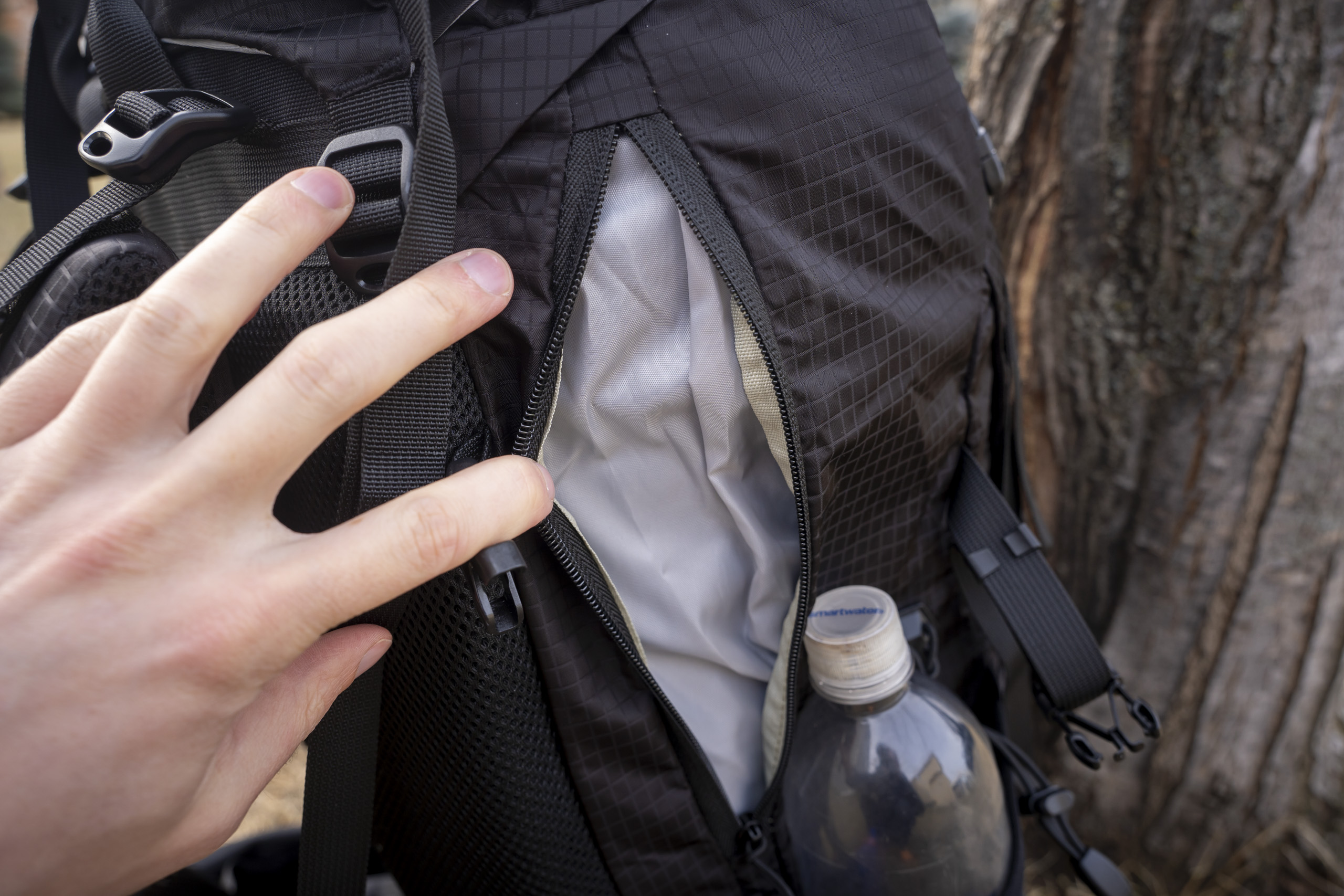
What Other Backpacking Packs Should You Consider?
For better long term value, please see our full guide to the best backpacking backpacks or consider the following options:
REI Flash 55 Review – The budget buy of our entire lineup is a great pick for experienced or new backpackers alike. With solid construction, quality materials, and a great feature set, the Flash impressed us during testing.
REI Trailmade 60 Review – The second cheapest backpack in our tests, the Trailmade isn’t quite the deal that the Flash is, but it does everything the Rhino does with a much better experience at a much lower weight.
Granite Gear Crown 3 Review – The Crown 3 is a much better starter pack than the Rhino because it works for both traditional and ultralight backpacking and performed well in most of the categories we tested.
